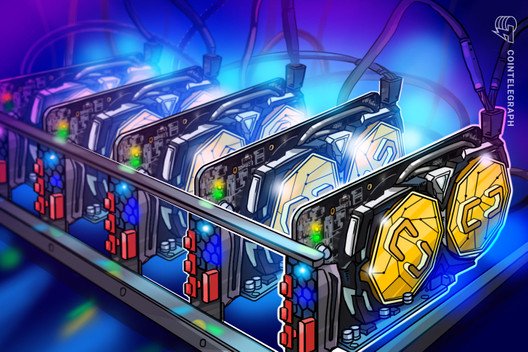Regulation still key for the evolution of CeFi: Paris Blockchain Week
Centralized finance (CeFi) will continue to be an important avenue to drive the adoption of decentralized finance (DeFi) services in the future, but regulatory considerations remain a significant part of the process.
This was a key theme that emerged during a panel titled ‘How to Do CeFi Right – the Balance Between TradFi & DeFi?’ at Paris Blockchain Week. A handful of industry experts weighed in on the current state of CeFi and DeFi, their relationship and importance for the future of the space.
Eric Turner, vice president of market intelligence at Messari, highlighted the core difference between the two terms, which have become somewhat overlapping in recent years given the link between centralized exchanges and decentralized platforms:
“When you think about what we consider CeFi today, it’s the centralized exchanges. It’s people that are offering custody services and lending services. But if it’s between DeFi and CeFi, you know, all of those services can be built in different ways.”
Turner also highlighted CeFi’s role as the main onramp for the ‘next billion users’ in terms of a fiat entry mechanism as well as a trusted avenue for larger professional investors to move into the crypto space.

Joaquin Sastre, BitGo’s LatAm & EMEA managing director, said that the institutional-focused wallet platform sees a key difference between the two categories:
“What really matters here, to differentiate between CeFi and DeFi from our view, is really the access and the storage.”
Sastre maintains that adoption of DeFi protocols and platforms will be a natural progression, while CeFi continues to give regulators a means to offer some protection institutions through controls and legal parameters.
Related: 1inch Network co-founder to crypto newbies: ‘Don’t trust anyone, verify’ | PBW 2023
Ian McAfee, co-founder and CEO of Shift Markets, highlighted the importance of what CeFi platforms and DeFi protocols have to offer while suggesting the terminology itself serves more to describe and capture what the technology could do:
“Finance will just be using blockchain 20 years from now, right? So these words are just kind of going to evaporate.”
Charlie Meraud, CEO of cryptocurrency market maker Woorton, believes that the two are becoming intrinsically linked, moving on from the original drawcards of DeFi which offered interest rates on liquidity pools that were better than anywhere else:
“We’re going to end up in a world where you take a credit risk with TradFi, or a technology risk with DeFi. You’re going to have to trade off between those two and make those two live in the same world.”
CeFi also remains a key driver for cryptocurrency adoption according to McAfee, who said that centralized institutions are still ‘waking up to crypto’ as an asset class. Helping banks and brokers largely involves introducing them to CeFi services like centralized exchanges:
“You give it to them in a format that they’re familiar with. The first thing people do is to buy Bitcoin or the first thing that gives a taste of this new technology.”
Sastre also believes that tokenization of assets is another major driver of adoption which is served by both CeFi and DeFi players. He said that tokenization of financial assets and real estate are ‘no-brainers’ that will be driven by wider use of CeFi in particular:
“It gives you access to the asset to be able to be traded worldwide 24/7. That is a huge advantage for financial markets and also for normal people in the street.”
While CeFi continues to plug into DeFi protocols to serve both retail and institutional users, regulation remains one of the most important considerations for organizations and businesses looking to enter the cryptocurrency ecosystem through some sort of exposure.
For BitGo’s Sastre, regulation is an inevitable component that is necessary given the fallout of the collapse of core CeFi players like FTX over the past year:
“These things can be avoided if there’s a segregation of duties, if there’s qualified, regulated fiduciary custodians holding the assets and giving the proven truth of reserves.”
Turner also stressed the importance of the cryptocurrency industry taking a more active role in driving conversations with regulators and government agencies to help the not-so crypto savvy have a better understanding of the ins and outs of the ecosystem:
“If we can regulate where the on ramps and the off ramps are, I think that’s incredibly powerful to allow us to build everything else in this industry.”
The regulation was a particularly hot topic given that American cryptocurrency exchange Coinbase received a Wells Notice from the U.S. SEC in relation to its staking services on March 22. This is a prime example of a CeFi player offering DeFi-based services to its users.
Cointelegraph is on the ground at Paris Blockchain Week – providing live updates from key presentations, panels and interviews throughout the event.









